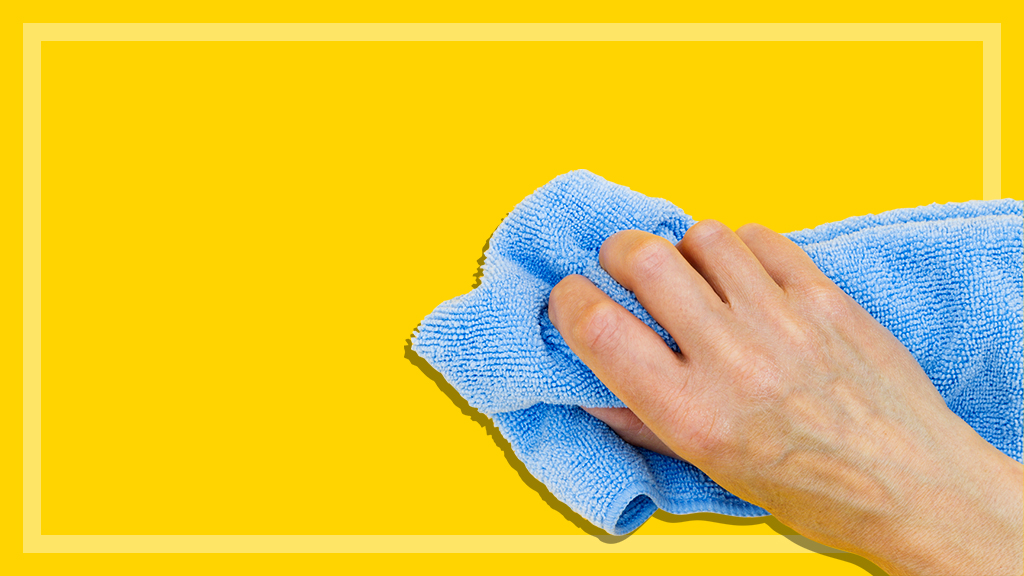Get our independent lab tests, expert reviews and honest advice.
What are cleaning tablets and do they work?
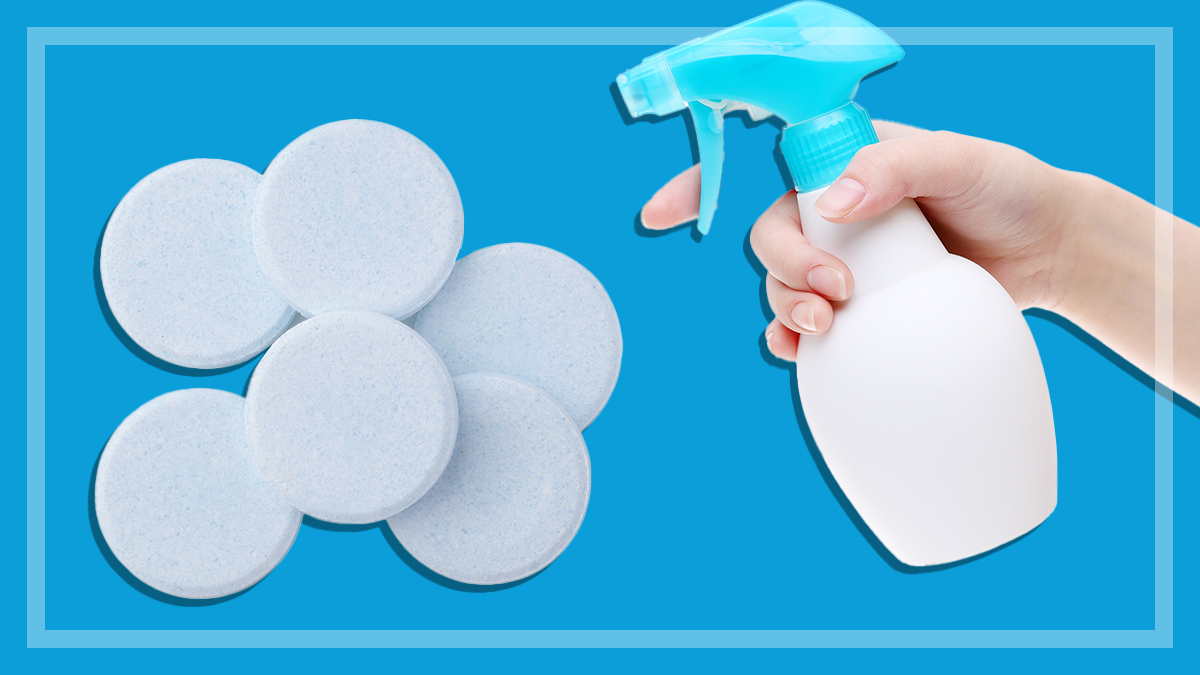
Does anyone else have terrible memories of using old-school bar soap in the shower as a kid? I hated how it went mushy if it sat in water and the way it would become a paper-thin wafer – which we’d have to use until the bitter end so it wasn’t wasted.
On this page:
- Why buy tablets instead of sprays?
- Why CHOICE tests cleaning tablets
- What are cleaning tablets made from?
- Do cleaning tablets work as well as traditional sprays?
- Are cleaning tablets worth buying?
- Glass cleaner tablet test results
- Multipurpose cleaner tablet test results
- Kitchen cleaner tablet test results
- Bathroom cleaner tablet test results
And then there was the inevitable hair stuck in it, which I’d try to remove as quickly as possible without thinking too much about where it came from. (Shudder.)
Maybe that was just my family. If it was yours too, you have my sympathies. (#SoapTraumaSolidarity)
Those memories are probably what sent many of us running for bottles of liquid shower gel as adults.
We quickly adopted liquid soap for handwashing, too, and all the hand scrubbing during COVID cemented it as a permanent fixture in our bathrooms.
It’s not the only plastic-packaged product in our bathrooms, of course: open the bathroom cabinet and you’re likely to be greeted by a sea of plastic.
But in an effort to curb my plastic use, I’ve been returning to my roots and using bar soap again. It still gets mushy (shudder) but a soap saver bag deals with the paper-thin wafer situation.
It turns out there’s quite the market for plastic-free products. Plastic is out; bar soap is in. And it’s not the only solid on the block.
You can pick up shampoo and conditioner bars, solid deodorant, and even powder toothpaste, all packaged without plastic. And the trend has now moved out of the bathroom and into other areas of our homes.
Cleaning tablets are a great idea in theory, but will they make your home as clean as your conscience?
Enter dissolvable cleaning products: tablets, pods and powders that you mix with water to create a cleaning spray. Generally packaged in recycled paper or cardboard, they’re touted as an environmentally-friendly alternative to sprays packaged in plastic bottles.
They’re a great idea in theory, but will they make your home as clean as your conscience?
We’ll explain how they work, why you might choose them, and whether they’re worth switching to.
Why buy tablets instead of sprays?
How do you package a liquid product without a plastic bottle? You take out the water, of course!
If you think about it, when we buy cleaning sprays, we’re actually paying for a lot of water – the active ingredients often make up a tiny proportion of the overall volume.
When you remove water from the equation, there’s far less physical product to package and transport, which leads to big savings on materials and freight, both financially and environmentally.
When we buy cleaning sprays, we’re actually paying for a lot of water – the active ingredients often make up a tiny proportion of the overall volume
Concentrated products were the first step in this direction: you only need half as much as regular products to do the same job, which creates less plastic waste and fewer emissions from transport.
But solid cleaners take the concept all the way, completely doing away with water. You’re paying just for the active ingredients and none of the stuff that comes out of the tap (almost) for free.
One manufacturer says that one full truck of their soluble cleaning product replaces 12 trucks full of traditional cleaning sprays. If their calculations are correct, that’s a lot of carbon that’s no longer going into the atmosphere, and a lot of plastic that’s not ending up in the bin.
Why CHOICE tests cleaning tablets
Each year our experts assess the market to decide which cleaning products to test, and this year pods, tablets and powders appeared on the market.
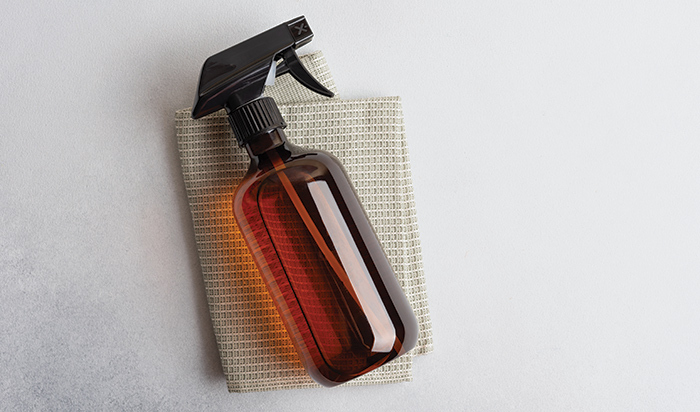
Our job is to keep shoppers informed, so we added some of these products to our surface cleaner tests to help you decide whether they’re right for you.
This year we tested 73 surface cleaners (including glass cleaners) and 44 bathroom cleaners. Of these, 13 were dissolvable products from four brands: Cleanery, Eco Turtles Cleaning, Re.stor and Resolv. That’s about 10% of all products tested.
We assessed them alongside traditional spray cleaners to see whether they did as good a job as the pre-made sprays you find on the shelf in the supermarket.
How did they do? We’ll reveal the results below.
What are cleaning tablets made from?
“Natural”, “environmentally friendly” and “green” are big buzzwords used to sell ‘eco’ products, but what exactly do they mean?
It’s hard to say, really. They’re not regulated terms like “organic” or “free range”, so manufacturers can use them however they like.
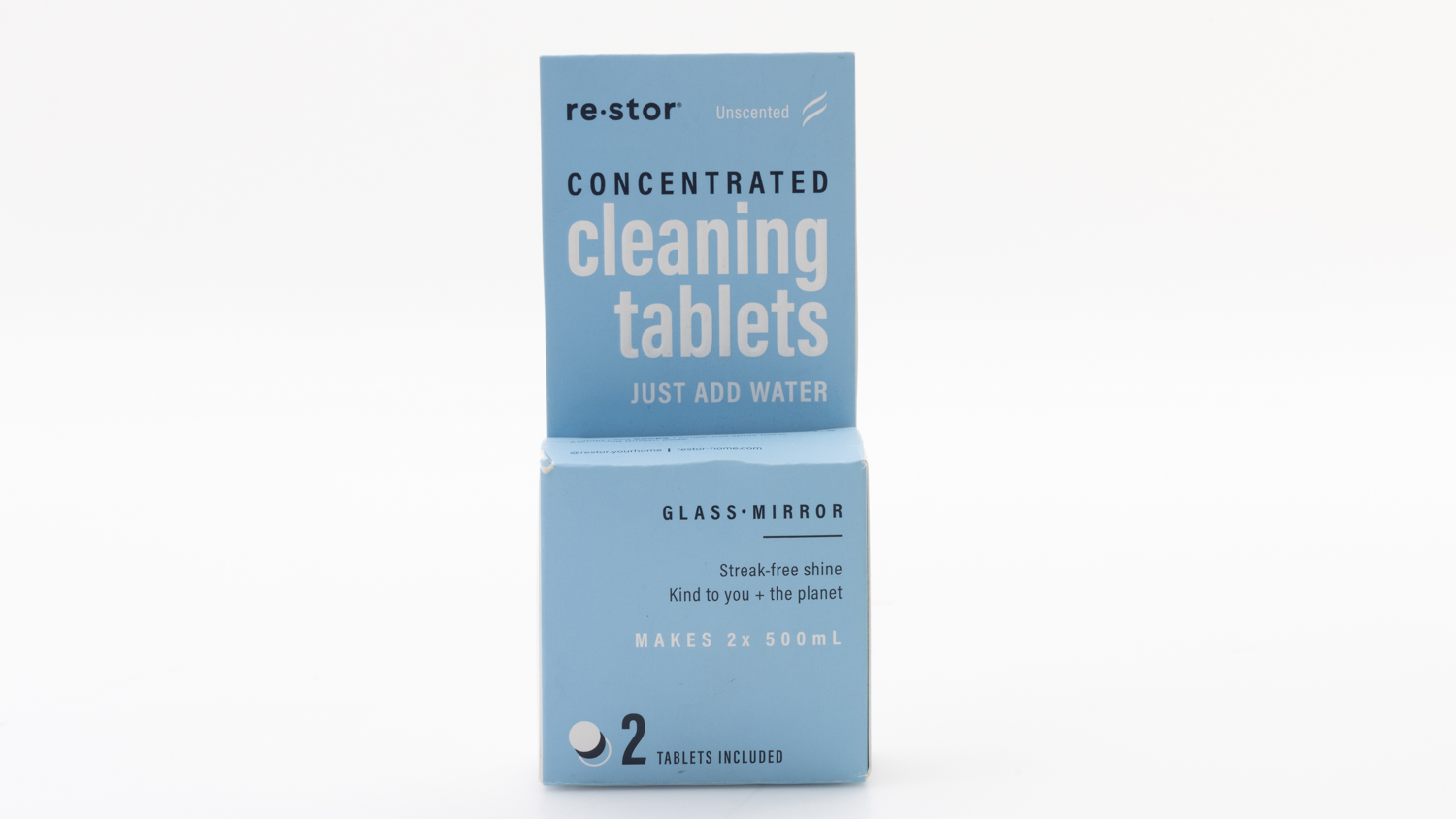
A number of the cleaning tablets we’ve tested make claims such as “99.9% of ingredients from natural origins once diluted” – an easy claim to make when water (a natural product) is the main ingredient!
The problem is that manufacturers aren’t obliged to list the ingredients on their cleaning products, so it’s difficult to compare the ratio of ingredients to water in a traditional cleaning spray and a spray made from dissolvable tablets or powders.
And unfortunately, CHOICE can’t test the enviro claims of every product that comes through our labs. They’re difficult to substantiate, and the cost is prohibitive – spending all our money on chemical tests would mean we couldn’t test other products for our members and other shoppers.
We always suggest you take eco claims with a grain of salt – and don’t believe everything you read. Read more about how to tell if a product really is eco-friendly.
Dissolvable products have lower levels of key ingredients, which might explain why they just don’t pack the same punch
Rebecca Ciaramidaro, CHOICE cleaning expert
So, how do the ingredients in cleaning tablets compare with traditional cleaning products?
Cleaning products, whether eco-friendly or not, usually contain several key ingredients.
“Surfactants can dissolve in both water and grease, which means they can draw greasy stains out, making them easy to wipe away,” says CHOICE cleaning expert Rebecca Ciaramidaro.
“In our testing, we often find that the products that perform well tend to have higher levels of surfactants.
“Other key ingredients include acids (like citric and lactic acid), alkalines and alcohol.”
The cleaning tablets we tested include surfactants such as sodium coco sulphate, ceteareth-25 and non-specified “anionic surfactants”, and acids such as fumaric acid, citric acid, sulphuric acid and acetic acid.
Our multipurpose cleaners review includes all the details of the ingredients listed on the pack.
“Unfortunately, dissolvable products have lower levels of these key ingredients than traditional cleaning products, which might explain why they just don’t pack the same punch,” says Rebecca.
Do cleaning tablets work as well as traditional sprays?
In short: no. Or at least, not the products that our experts have tested in our labs.
In our tests, the best cleaning sprays tend to score 90% and above – but most of the dissolvable cleaning products scored between 35% and 55%.
The lower level of active ingredients in soluble cleaning products means they just don’t have the cleaning power to tackle tough stains
Rebecca Ciaramidaro, CHOICE cleaning expert
Unfortunately some brands made regular appearances at the bottom of the leaderboard, coming in either dead last or among the lowest scorers.
Many of them were pretty much on par with plain old tap water, so even though you’re creating less plastic by using them instead of traditional sprays, you’re not doing your housework routine any favours.
“The lower level of active ingredients in soluble cleaning products means they just don’t have the cleaning power to tackle tough stains,” says Rebecca.
Are cleaning tablets worth buying?
From a performance perspective, dissolvable cleaning products are not a great buy.
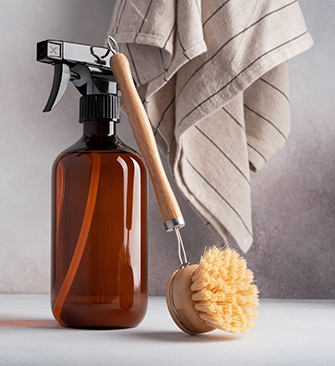
But from an environmental perspective, they might be worth considering.
Cleaning tablets, powders and pods are a relatively new product category, so with some development they may end up being great, but for now our test results suggest they need work.
Ultimately, you’ll need to weigh up the pros and cons. If sustainability is your main goal, then the extra scrubbing time may seem like a reasonable trade-off to reduce your carbon footprint.
Keep in mind, though, that if a product performs only marginally better than water, then you’d save a lot of money and effort (and a few extra carbon miles) by just using water. And perhaps a natural homemade cleaner.
From a performance perspective, dissolvable cleaning products are not a great buy
If you just want the job done well and done quickly, though, we recommend other options: you could use ‘eco’ sprays packaged in recycled plastic bottles, opt for refills rather than buying a whole new pack each time, buy in bulk, or even make your own cleaning products from products you probably already have at home.
Glass cleaner tablet test results
Here’s how soluble glass cleaning products performed compared to plain water and the top-scoring glass cleaner in our tests.
Glass and window cleaners
How do cleaning tablets compare?
Windex Original spray: CHOICE Expert Rating: 100%
Tap water: 55%
Resolv Window & Glass dissolvable pod: 55%
Re.stor Cleaning Tablets glass mirror: 35%
To put these products’ performance into context, plain water scored 55%. That’s right: you’re better off using tap water than these cleaning products.
And in the case of the Re.stor Cleaning Tablets Glass Mirror, you’ll actually end up with worse results – it ranked a full 20 percentage points below plain water.
At $1.40 per 100mL (once mixed with water), it’s not cheap either. That’s one of the most expensive glass cleaning products we tested, for the lowest score overall.
The top-scoring glass cleaners in our review cost between 76 and 96 cents per 100mL, and they all scored 90% and higher. So if you buy the Re.stor tablets, the only thing you’ll be cleaning out is your wallet.
The Resolv Window & Glass dissolvable pod is far cheaper at 53c/100mL, but it only cleans as well as plain old tap water, so you’d be better off just not spending the money at all.
They may not create plastic, but the Re.stor and Resolv products still create carbon emissions through their manufacture, packaging and transport – but since they don’t do the job these emissions are pretty much all for nought. You could say that that’s less environmentally friendly than sprays in plastic bottles.
Multipurpose cleaner tablet test results
Here’s how soluble multipurpose cleaning products performed compared to plain water and the top-scoring multipurpose cleaner in our tests.
Multipurpose cleaning sprays
How do cleaning tablets compare?
Earth Choice Undo this Mess Spray: 95%
Cleanery Multipurpose antibacterial powder: 55%
Resolv All-Purpose dissolvable pod: 50%
Re.Stor Concentrated Cleaning Tablets: 50%
Eco Turtles Multipurpose cleaning tablet: 50%
Tap water: 45%
The top-scoring multipurpose cleaners from our test are actually also products that make eco-friendly claims: Earth Choice Undo This Mess with Grease Blaster Multipurpose and Earth Choice Antibacterial All Purpose both received a CHOICE Expert Rating of 95%.
Koh’s refillable Universal Cleaner and Bosisto’s Multipurpose also made the list of CHOICE expert-recommended multipurpose sprays.
Unfortunately none of the soluble tablet cleaners made the cut – and in fact they missed out by quite a long way. None of them performed a great deal better than tap water, and all but the Cleanery Multipurpose Antibacterial powder came in second-last place. (Not that the Cleanery product scored much better.)
The multipurpose cleaners category now includes plenty of products boasting more eco-friendly credentials, and even some of the more traditional cleaners come in recycled plastic bottles, so even mainstream manufacturers are moving towards more environmentally friendly practices.
Kitchen cleaner tablet test results
Here’s how soluble kitchen cleaning products performed compared to plain water and the top-scoring kitchen cleaner in our tests.
Kitchen cleaning sprays
How do cleaning tablets compare?
Dettol Healthy Clean Kitchen spray: 95%
Cleanery Kitchen Antibacterial powder: 65%
Eco Turtles Cleaning Degreaser tablet: 55%
Re.Stor Concentrated Cleaning Tablets Kitchen: 50%
Resolv Everyday Kitchen Cleaner dissolvable pod: 50%
Tap water: 45%
There’s a big difference between the best and worst scoring kitchen cleaners: the top products scored 95%, but the next highest score is a big step down at 65%.
Sadly, all the soluble and ‘eco’ products landed towards the bottom of the pile in this test, with three of the four soluble products scoring just 55% and below – not much better than plain water.
Bathroom cleaner tablet test results
Here’s how soluble bathroom cleaning products performed compared to the top-scoring bathroom cleaner in our tests.
Bathroom cleaners
How do cleaning tablets compare?
ecostore Antibacterial Bathroom refill concentrate spray: 90%
Resolv Bathroom Cleaner dissolvable pod: 57%
Cleanery Bathroom Antibacterial Cleaner powder: 55%
Re.Stor Concentrated Cleaning Tablets bathroom: 40%
Bathroom cleaners are quite a different product to the other surface cleaners we’ve looked at: they need to cut through soap scum rather than just dirt.
The soluble cleaners we tested were no match for the soap-covered tiles we use to assess their cleaning performance, and once again they were at the back of the pack.
But plenty of ‘eco’ products did quite well in this test, with four of these products recommended by our experts. The highest overall score went to an ecostore concentrate refill.
A 50mL bottle of the ecostore concentrate makes up 500mL of cleaning spray, which the company says reduces plastic by 90% compared to buying a whole new bottle each time.
If you’re looking to reduce your plastic use and carbon footprint, this is a good option.

